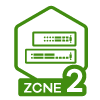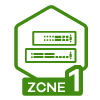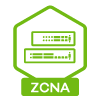How Does Nebula Topology Display AP and Its Uplink Device?
Options
Zyxel_Bella
Posts: 560  Zyxel Employee
Zyxel Employee




 Zyxel Employee
Zyxel Employee



Understanding Nebula's Topology Management:
Nebula's topology visualization relies heavily on Link Layer Discovery Protocol (LLDP) information that is gathered from network devices like Access Points (APs). LLDP is a network layer protocol used by devices to advertise their identity and capabilities on the local network, aiding in the management of network topology.
How It Works:
- The AP collects LLDP packets from directly connected devices, which include details about the device identities and their capabilities.
- This LLDP data is crucial as it forms the basis of what the AP knows about its immediate network environment.
- The AP sends this collected information, starting with the first entry of its neighbor list, to the Nebula Control Center (NCC). This entry typically represents the immediate uplink device to which the AP is connected.
Display in Nebula:
- In the Nebula topology, the AP will appear connected to the device listed in the first entry of its LLDP neighbor list. This is generally the direct uplink device such as a switch or another networking device.
- If the topology seems incorrect, it may be due to the AP sending an LLDP entry of a device that is not the intended primary uplink or the uplink device doesn't support LLDP.
Troubleshooting Incorrect Topology:
- Verify that the AP's primary uplink device is configured correctly to send LLDP packets.
Conclusion:
By ensuring that LLDP settings are correctly configured and that the network structure accurately reflects the intended connections, Nebula's topology display can provide a clear and functional representation of your network layout.
0
Categories
- All Categories
- 435 Beta Program
- 2.7K Nebula
- 176 Nebula Ideas
- 117 Nebula Status and Incidents
- 6.1K Security
- 425 USG FLEX H Series
- 298 Security Ideas
- 1.6K Switch
- 78 Switch Ideas
- 1.2K Wireless
- 44 Wireless Ideas
- 6.7K Consumer Product
- 274 Service & License
- 419 News and Release
- 88 Security Advisories
- 31 Education Center
- 10 [Campaign] Zyxel Network Detective
- 4.2K FAQ
- 34 Documents
- 34 Nebula Monthly Express
- 83 About Community
- 89 Security Highlight